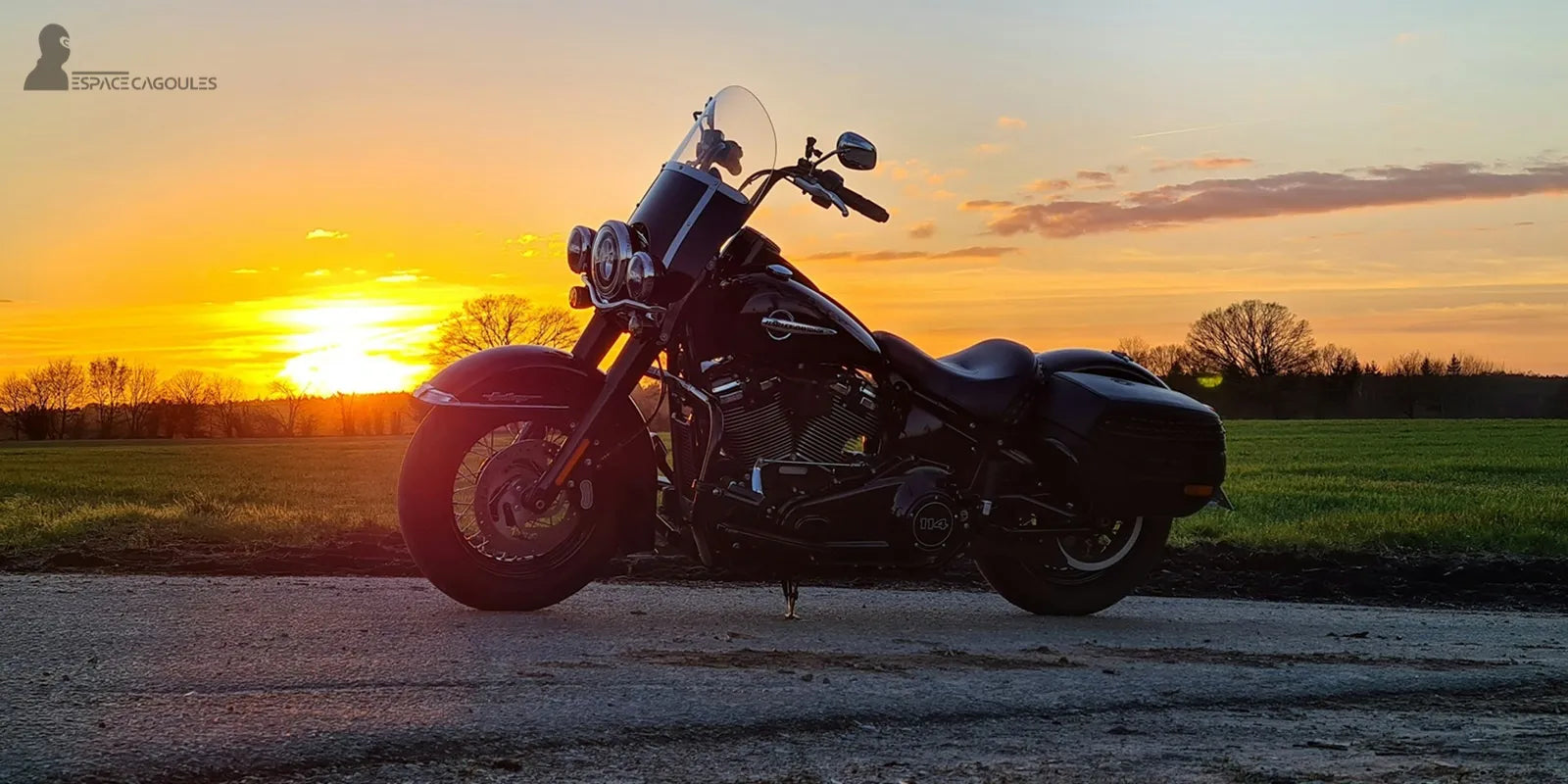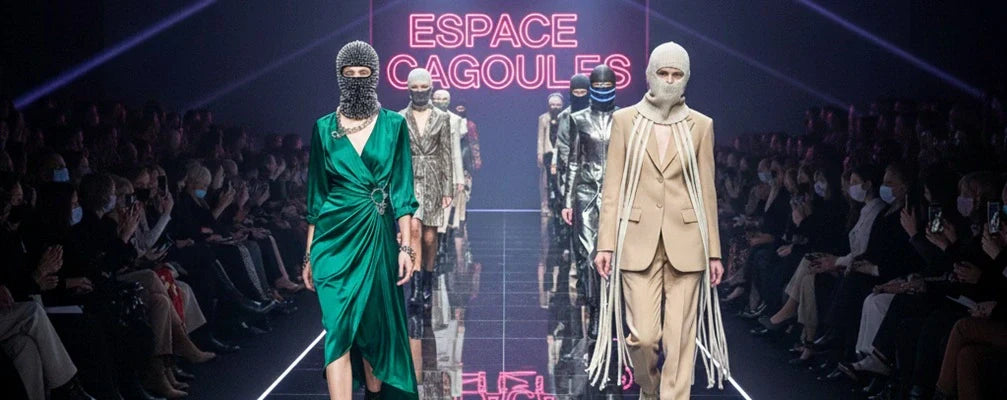
Login
Country
Language
Balaclava by gender
Balaclava by activity
Chapka Hats
Balaclava by color
Balaclava by shape
The Catalogue

Filter by:

When the temperature rises, the summer motorcycle balaclava becomes a true asset for performance and comfort. Designed to limit skin overheating, quickly wick away sweat, and protect the skin from UV rays, it significantly enhances well-being under the helmet for both urban rides and long distances. Its role is twofold: to provide a hygienic barrier against sweat and friction, and to optimize thermal management through lightweight and ultra-breathable technical textiles. The result: a more comfortable helmet, fewer irritations, maintained concentration, and a lasting feeling of freshness.
Between helmet ventilation and heat conduction from the internal foam, the skin is subjected to opposing forces. A balaclava is the regulating layer that stabilizes everything: it smooths air flows, decouples the skin from the internal padding, and limits heat spikes. On the road, a high-performance fabric prevents moisture saturation, reduces odors, and offers better protection than the helmet's simple lining, especially during stops at traffic lights or in between lanes when the air becomes scarce.
Recommended for its quick-drying properties and durability. Open mesh constructions allow for excellent air circulation. It is a rational choice for daily and intensive use. Ideal for a motorcycle balaclava when the number one goal is thermal dissipation. Minimalist polyester motorcycle balaclava
Superior elasticity, precise fit, and support without pressure points. Lycra conforms to the body shape, remains stable at high vibration frequencies, and prevents creasing under the foams. Excellent for a second-skin feel, especially during long sessions. Lycra motorcycle balaclava
Cool touch, very low friction, and pleasant glide when putting on the helmet. Particularly appreciated in hot or humid weather. Its instantly refreshing feel makes it a reference for limiting perceived discomfort at the start, similar to our silk motorcycle balaclavas.
A relevant compromise between softness, capillarity, and durability. Modern microfiber spreads moisture over a larger surface area to accelerate evaporation, contributing to a true feeling of freshness. Microfiber motorcycle balaclava
A good balaclava should disappear... in the sense that it does not disrupt the field of vision or the fit of the foams. Well-designed summer models position stretch zones around the temples for the passage of glasses' arms, flat seams to prevent friction, and armholes designed not to create thickness at the intercom ear pads. The cut is designed to stay fixed during head rotations and follow the internal airflow of the helmet, without any unwanted floating. Here, we are looking for a thin motorcycle balaclava that maintains precise adjustment while maximizing ventilation.
The issue is not only the absolute temperature but the cumulative thermal load. Textiles capable of wicking sweat and promoting evaporation limit local overheating on the forehead, neck, and cheeks. Add an anti-UV treatment (UPF) and you reduce the risk of erythema during helmet-free breaks. A well-designed anti-sweat motorcycle balaclava acts as a heat exchanger: it captures moisture, distributes it, and releases freshness through evaporation, even in dense traffic.

You ride hard, often, sometimes for long periods. Your priority: a light motorcycle balaclava that never disrupts the helmet's dynamics and maintains its ventilation efficiency run after run. You will appreciate the differentiated mesh (more open areas on hot spots), strategic flat seams, and stability at high speeds. The goal is sustained thermal regulation and consistent comfort throughout the ride.
You are looking for a simple solution to put on, that avoids itching, limits odors, and is easy to wash. A quick-drying polyester/microfiber checks all the boxes: hassle-free maintenance, durability, controlled cost, and daily effectiveness. A well-chosen summer motorcycle balaclava significantly transforms the experience of commuting in the heat. For more winter protection, also explore our Winter Motorcycle Balaclava collection.
Beyond the fabric, the cut matters: a snug face fit, controlled collar height to avoid chin interference, soft hems that do not mark the skin. A high-performance ventilated motorcycle balaclava combines air channeling, moisture wicking, and pleasant skin contact, without slipping. For mixed use, some opt for cool silk at the start in cold conditions and then enjoy micro-ventilation while riding. Models dedicated to track days often prioritize lycra + mesh to ensure stability in a bent neck position.
Favor a cut that hugs the contour without compressing. If you wear glasses, check the freedom of movement for the arms and the absence of conflict with the ear pads. For sensitive faces, opt for fibers with a cool touch (cool silk) or very fine microfibers. Travelers will appreciate ultra-quick-drying models that can be compacted into a jacket pocket.
For precise targeting, some ranges specifically address audiences: a men's summer motorcycle balaclava with a wider neckline at the nape and a women's summer motorcycle balaclava designed for a finer face contour. These ergonomic adjustments affect stability, UV coverage on the forehead, and the absence of folds under the foam.
Product descriptions sometimes mention summer motorcycle balaclava (equivalent terminology), or highlight a very low weight to confirm its summer purpose. A mention of "mesh" indicates the presence of ventilation zones. Finally, if you are looking for a minimalist balaclava, a reference called thin motorcycle balaclava will be the best starting point.

Synthetic and actionable answers on materials, heat/UV protection, helmet compatibility, maintenance and male/female differences.
For summer use, choose a perforated micro polyester (express drying) or a technical microfiber with a high capillary action. Icy silk provides a cold touch during hot weather; The lycra guarantees the fit and limits wrinkles under the helmet foams.
Yes, if the textile is breathable and diffuses sweat to promote evaporation. An anti-UV treatment (UPF) limits the risk of erythema during helmet breaks removed. The objective : to reduce the cumulative heat load (heat + humidity), not just the temperature.
Overall yes, if the cut is thin and the seams flat. Check the freedom of the glasses temples, the absence of overthickness of the intercom earcups and a stable support during head rotations.
Yes: gentle cycle 30 °C, wash fillet, reduced spin. No fabric softener (it clogs the mesh) and air drying. This protocol preserves elasticity and breathability.
Performance is comparable, but some models for women incorporate a back opening for long hair/ponytail and ergonomic micro adjustments (face contour, nape of the neck) for stability and long-lasting comfort.

Everything You Need to Know About the Balaclava
Discover an expert guide dedicated to balaclavas: how they work, advantages, differences between 1-hole, 2-hole, and 3-hole models, choice of materials (fleece, polyester, neoprene, Ice Silk), usag...
More information
Winter motorcycle balaclava vs Summer motorcycle balaclava
Whether riding under a blazing sun or in the biting cold of December, one thing remains true: the motorcycle balaclava is one of the most useful pieces of gear for a motorcyclist. Too often overloo...
More information
Women's balaclava: from utilitarian accessory to symbol of winter elegance
Yesterday still associated with ski resorts and icy hikes, the women's balaclava has become one of the most desired accessories of the season. Its return to the winter collections marks an unexpect...
More information